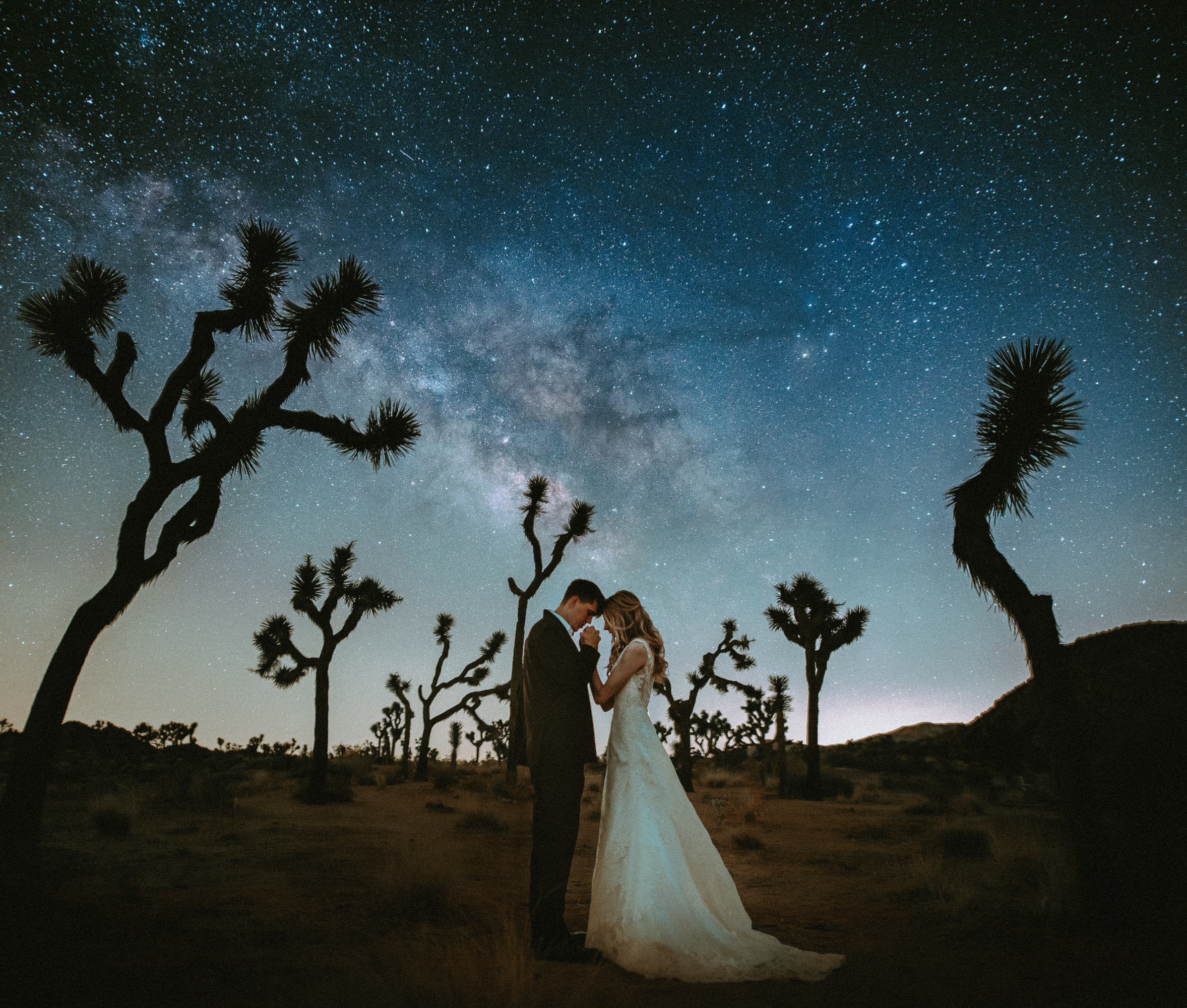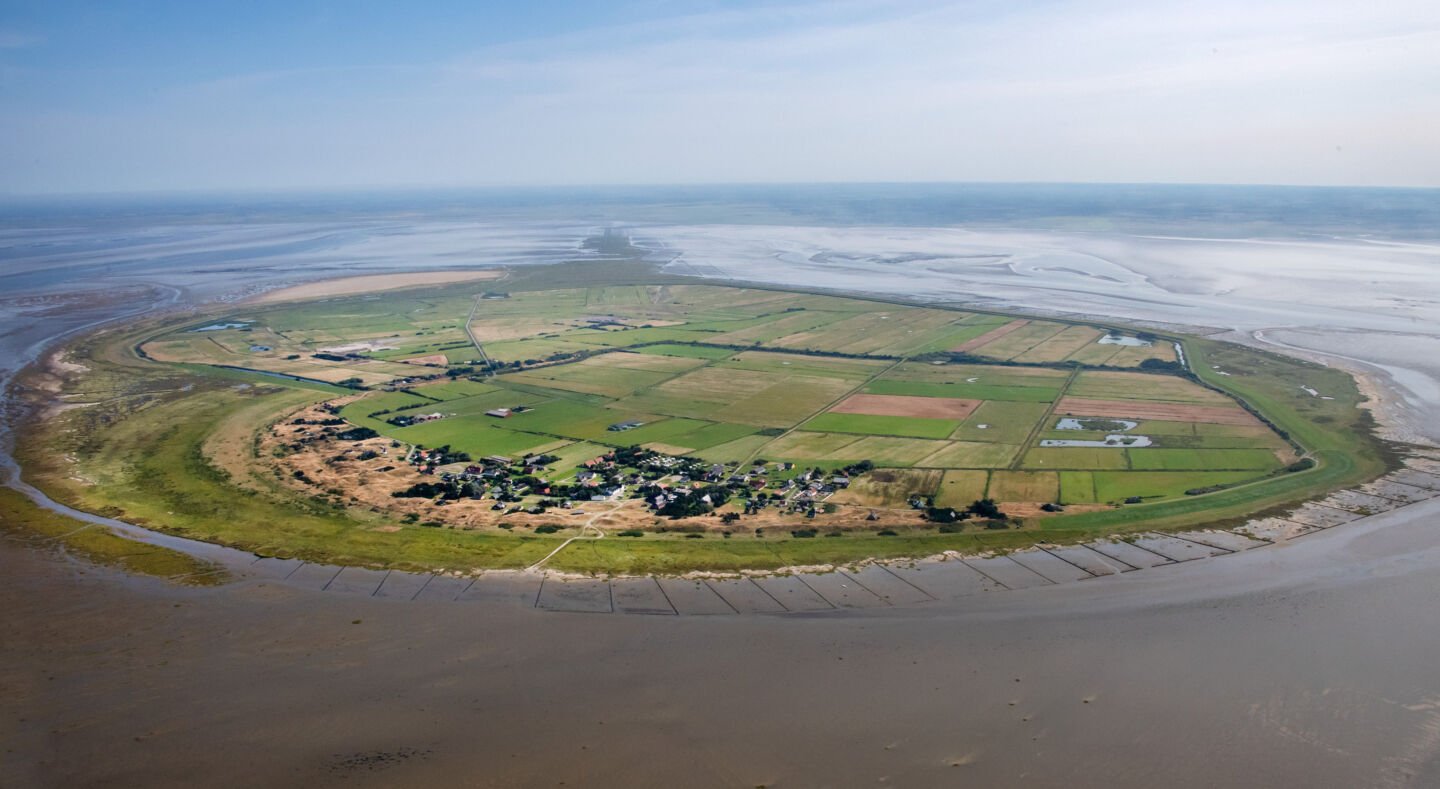
The 2021 Capture the Dark Winners and Honorable Mentions

Photography is one of the most powerful tools in dark sky advocacy. A photograph has the power to spark conservation awareness and reveal how beautiful and functional dark sky-friendly lighting can be. To celebrate, we recently hosted the second annual Capture the Dark Photography Contest. We received a staggering 1,122 entries from 66 countries. Our panel of esteemed judges reviewed the photos using criteria that included technical skill, composition, connection to the category theme, and ‘wow’ factor and the results are in!
The first-place winners of each category will receive a prize package that includes a GoPro HERO9, Peak Design field pouch or camera strap, a PhotoPills license, a feature in our Nightscape publication, the IDA blog and social media, an IDA membership, and IDA swag.
Check out the winners and some honorable mentions below!
Connecting to the Dark
Experiencing a natural night provides perspective, inspiration, and leads us to reflect on our humanity and place in the universe.
First Place

Photo Title: In the Search of the Core
Name: Egon Filter
Location: Mostardas, State of Rio Grande do Sul, Brazil
Technical Information: Nikon D850| lens Rokinon 35mm | f2.5 | 13sec | ISO 6400 | blend of 16 images, focus stacked
Story Behind the Photo: The night is really a beautiful moment to enjoy all the beauties of the sky. Here the plan was to reflect as many sights as possible in the water and the mirror – with the curious human being searching them in the small square in his hands.
We as humans should learn (relearn, in fact) to admire this scene in order to preserve it. Our challenge is to minimize the impact of light pollution while we grow as a civilization.
Second Place (Tie)
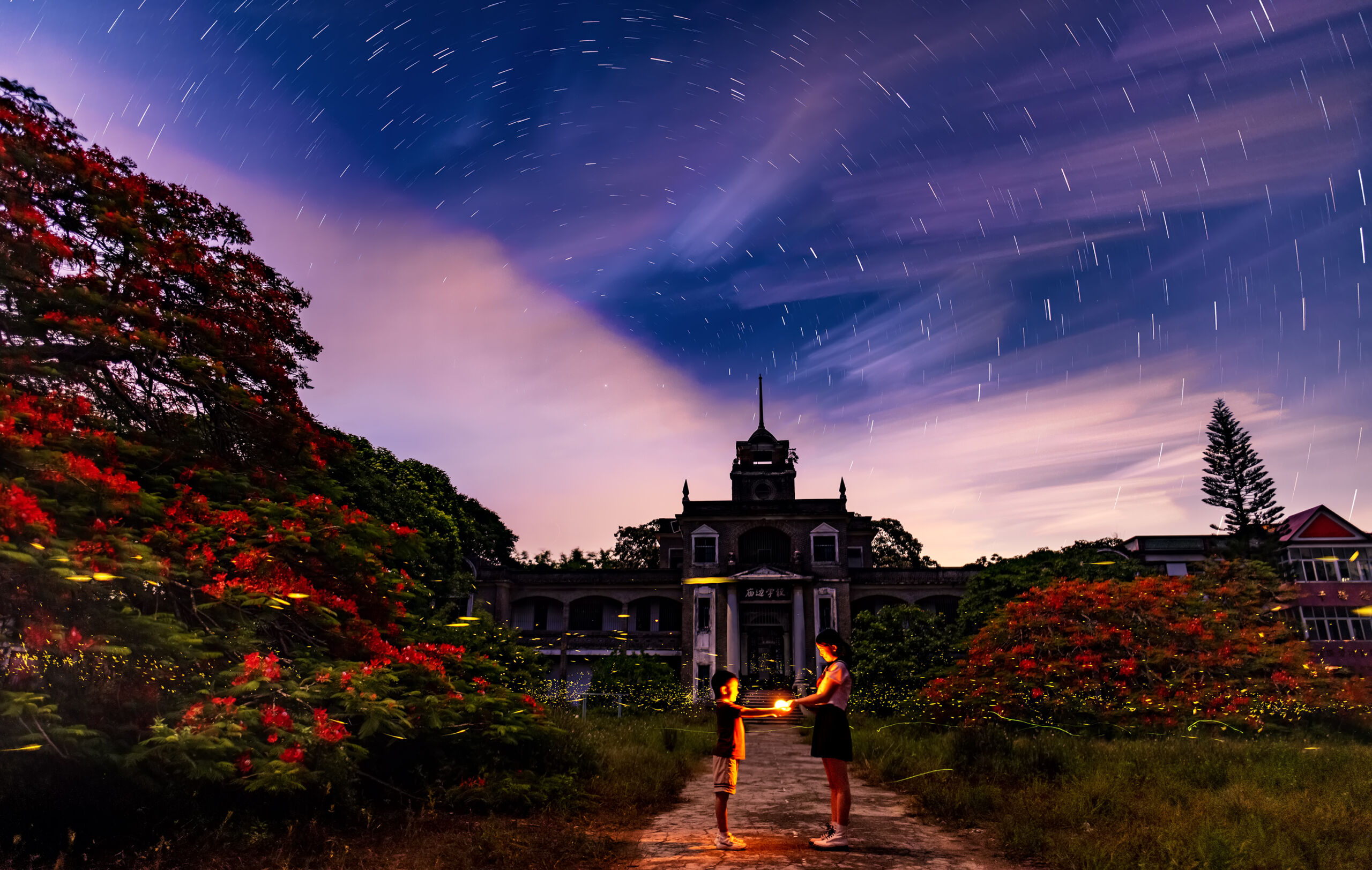
Photo Title: Magical Night for a Mother and Son
Name: Likai Lin
Location: Jiangmen, Guangdong, China
Technical Information: Nikon D850 | Nikon 20mm | f/1.8 | ISO 3200 | stacked by multiple 3-second exposures
Story Behind the Photo: In May every year, the Phoenix flowers are in full bloom. In front of an old primary school, a mother and her son are experiencing this magical night: groups of fireflies twinkle under the Phoenix trees, and the stars in the sky revolve around the North Star, which gives us a feeling of time flying and instant solidification.
Second Place (Tie)

Photo Title: Norrsken över Vintergatan
Name: Stefano Astorri
Location: Lapland, Sweden
Technical Information: Nikon D750 | Sigma 14-24mm | ISO 3200 | F2.8 | 14.0 mm
Story Behind the Photo: The shot was taken in March 2021 in the Swedish Lapland. It was a very cold and windy night. I went to the location hoping to see the northern lights right between two peaks when they all of a sudden started dancing on my left, with the winter Milky Way right behind me. I immediately re-adjusted the composition and the result is a photo that is actually a merge of 12 vertical shots to fully cover the two overlapping arches created by the northern lights and the Milky Way.
International Dark Sky Place
Over 170 protected lands and municipalities around the world have been certified by IDA as an International Dark Sky Place creating havens for astrophotographers.
First Place

Photo Title: Arch Rock Panorama
Name: Daniel Galluppi
Location: Joshua Tree National Park, California, USA
Technical Information: Sony A7RII | 24mm | F1.4 | ISO 3,200 | 8 Point Star Filter | 21 single exposures stitched panorama
Story Behind the Photo: Captured this photo at Arch Rock located in the White Tank Campground in Joshua Tree National Park. Took me years to capture this in solitude with no artificial lights.
Second Place
Photo Title: Cosmic Connection
Name: Lindsey Hofstra
Location: Joshua Tree National Park, California, USA
Technical Information: Blend | Bluehour Foreground f/1.8, 14mm, iso 1250, 1/125 | Sky f/1.8, 14mm, iso 1200, 8”
Story Behind the Photo: In 2017 Joshua Tree National Park was designated as an International Dark Sky Park. Because of this designation, Joshua Tree National Park will continue to be a haven for astrophotographers and everyone who wants to see and feel connected to the cosmos around us.
Third Place

Photo Title: Sand and Stars
Name: Chris Olivas
Location: Death Valley National Park, USA
Technical Information: Stack/Blend | Sony A7Siii | 20 mm | f1.4 | 10 sec | ISO 1000
Story Behind the Photo: Milky Way rising over moonlit Eureka Dunes in Death Valley National Park
The Impact of Light Pollution
Light pollution can have significant impacts on the environment, human health, and our access to the night sky.
First Place
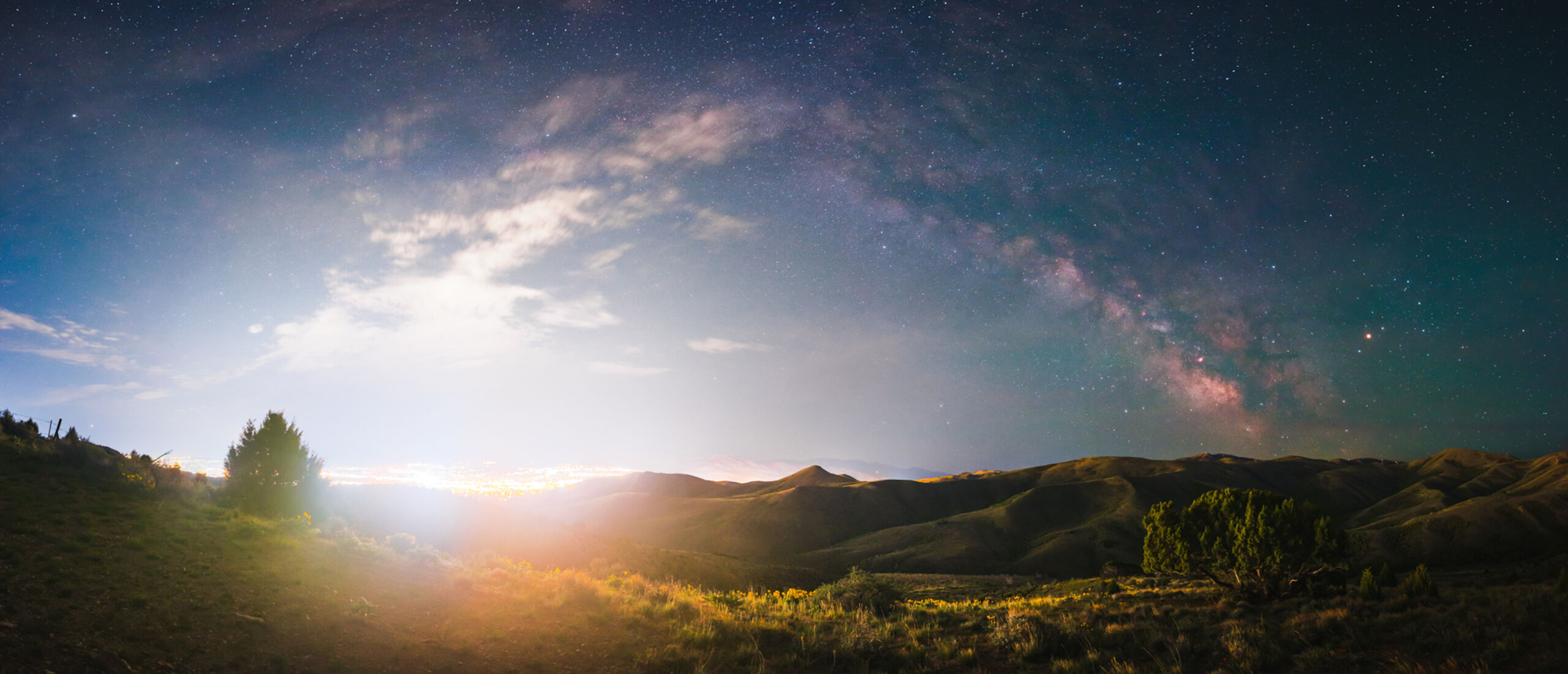
Photo Title: From Light to Dark
Name: Noel Benadom
Location: Pocatello, Idaho, USA
Technical Information: Canon 6D with Hydrogen Alpha astro mod done by LifePixel and using an Optolong L-Pro light pollution filter | Lens: Bower 24mm f/1.4 at f/2 | ISO 8000 | 13” each. Processed in Lightroom and Photoshop | City lights bracketed to retain some of the color detail, else all detail in the light pollution would’ve been lost
Story Behind the Photo: This is a 44-image panorama taken atop the hills outside the city of Pocatello, Idaho. On the left is the light pollution from the city, obscuring the Milky Way. Towards the right, the skies around Caribou National Forest are much darker, and the Milky Way’s core is completely visible.
Second Place
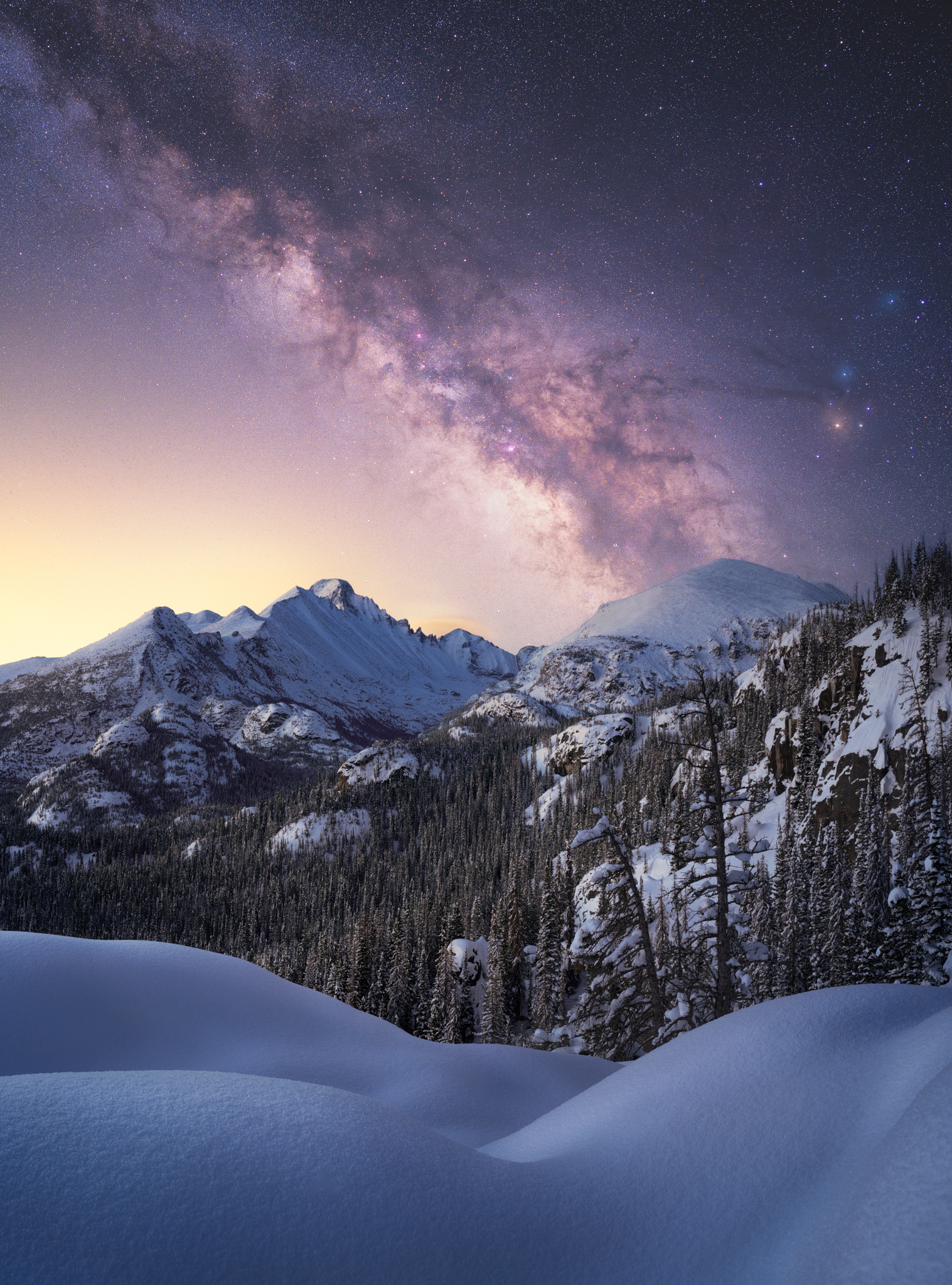
Photo Title: RMNP Light Pollution
Name: Brandt Ryder
Location: Rocky Mountain National Park, Colorado, USA
Technical Information: Sony A7iii | Sony 24mm | f/1.4 GM| Sky ISO 1000, f/2, 120s | Ground ISO 800, f/13, 30s | Stacked-Tracked-Panorama-Blend
Story Behind the Photo: Colorado is fighting to protect its dark skies but as the front range grows the darkness is disappearing. Here light pollution from Denver metro is seen over Longs Peak in Rocky Mountain National Park.
Third Place

Photo Title: The Dreamlike Sky Above the Sea of Clouds
Name: Likai Lin
Location: Guangdong, China
Technical Information: Nikon D610 camera | 35 mm f/1.4 lens | ISO 3200 | stacked by 8-second exposures
Story Behind the Photo: The changeable clouds just blocked the light pollution of the city, at the same time, the sea of clouds was illuminated colorful, making the starry sky more dreamy.In the upper right of this picture, we can see the bright and rare Canopus in the Northern Hemisphere.
The Bright Side of Lighting
Light pollution can give artificial lighting a bad reputation, but lighting that follows IDA’s Principles for Responsible Outdoor Light can be beautiful, healthy, and functional.
First Place

Photo Title: Star Trails Above the Grand Theater
Name: Likai Lin
Location: Guangdong, China
Technical Information: Nikon D610 | Samyang 14mm | f/2.8 |stacked by multiple 30-second exposures | ISO 200
Story Behind the Photo: Zhuhai Grand Theater is the first and only opera house at sea in China, which has become the new city landmark of Zhuhai City. This picture is composite stacked by almost 100 photos with the same exposure time of 30 seconds. We can distinguish the trail of Sirius and Orion in the middle of the sky, and the most distinctive one is the Orion Nebula which is purple. Meanwhile, Zhuhai Grand Theater also show its best advantage with stunning yellow light that respects the dark.
Second Place
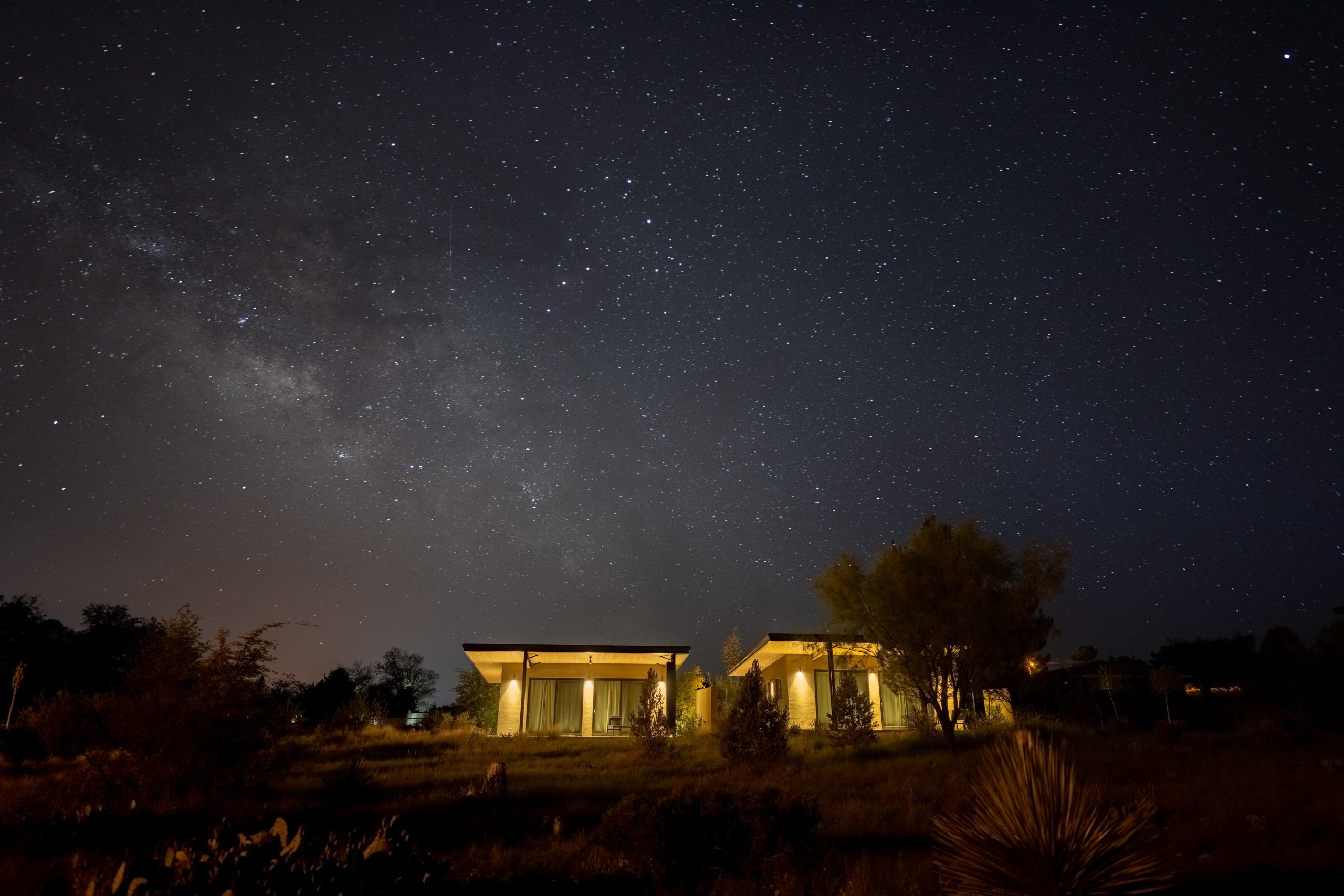
Photo Title: Marfa Gardens and the Milky Way
Name: Stephen Hummel
Location: Marfa, Texas, United States
Technical Information: Nikon Z7ii| Nikon Z 20mm, 1.8s | 30 second exposure | F/1.8 | ISO 400
Story Behind the Photo: This photo shows a pair of guesthouses illuminated with shielded, dimmable 2700K LED lights. The light fixtures provide enough illumination to see safely, but their proper shielding prevents light from being wasted or producing glare. Even with the lights on, the Milky Way is clearly visible above in this single 30-second exposure.
Third Place

Photo Title: Northern Nights
Name: Marybeth Kiczenski
Location: Eagle Harbor, Michigan, USA
Technical Information: Single image exposure | Nikon z6 (visible + h-alpha modded) | Nikkor 20mm f/1.8s lens | Iso 3200 | f/2 | 10-seconds
Story Behind the Photo: In the far reaches of Michigan’s Upper Peninsula, you’ll find a place where the only lights are those that are needed – such as lighthouses. As such, nature’s light show – the Aurora – takes center stage!
Creatures of the Night
Light pollution doesn’t only erase our view of the stars, scientific evidence suggests that artificial light at night has negative and deadly effects on wildlife including amphibians, birds, insects, and mammals.
First Place

Photo Title: Nesting Under the Milky Way
Name: Mihail Minkov
Location: Detelina Village, near the city of Varna, Bulgaria
Technical Information: Sony A7III | Samyang 85 mm F1.4 | ISO 4000 | F2.8 | 13″ | Single-shot exposure
Story Behind the Photo: This is a shot I took last year over July. There was a stork nest, near my village house close to a road with intensive traffic. During the day I was thinking that would be great to manage to capture the storks with the Milky Way core behind them. The same night, the weather was perfect and I was on the location. I made a few test shots. This one is 13″ single shot, and before some of you start arguing that this is impossible, the stork stay in that position for about a minute before made any move. I took about 15 single exposures before I decide to go back home. The light that lighted the nest is from a car coming from the distance.
Second Place
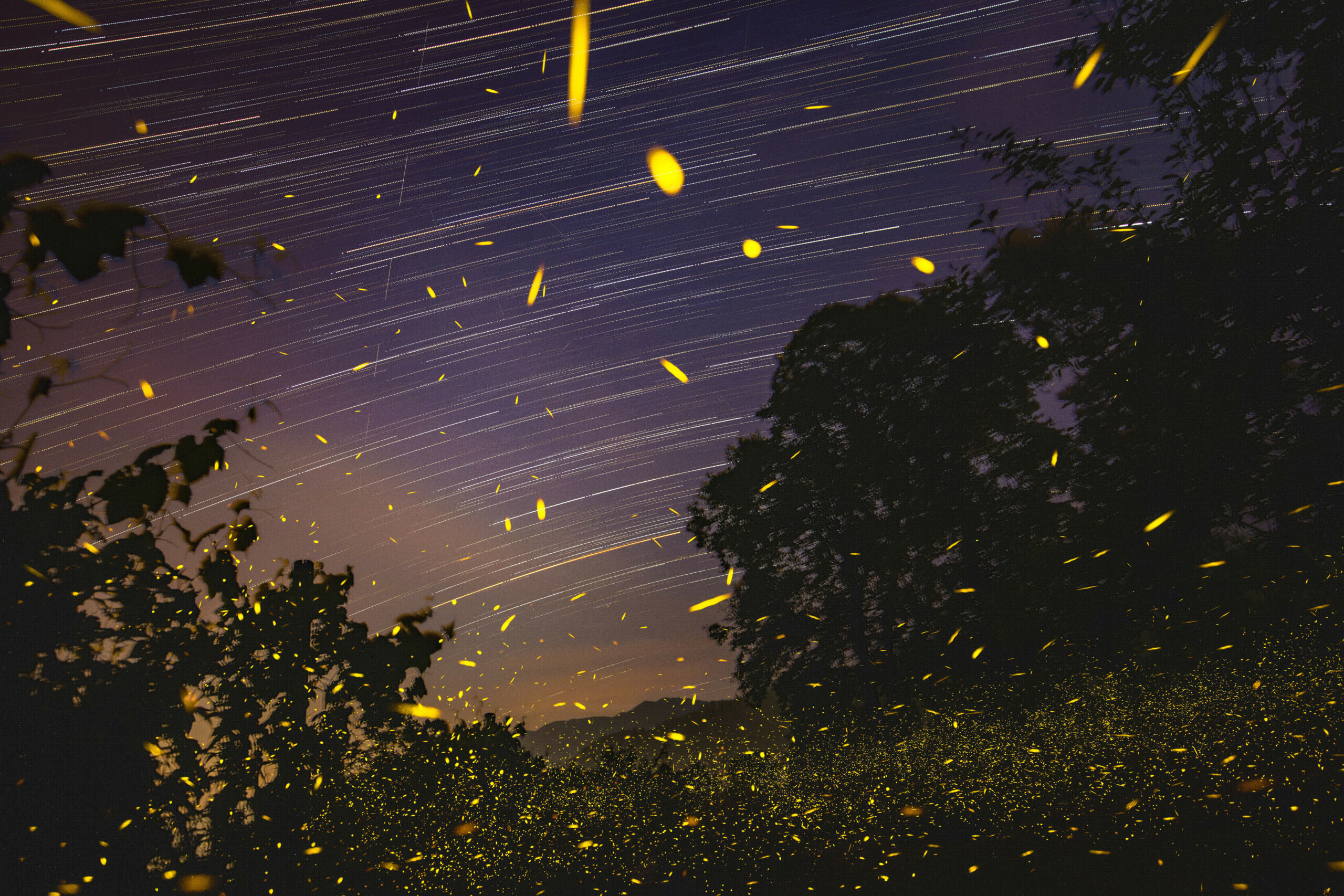
Photo Title: Qualcosa brilla lassù e qualcosa quaggiù (Something shines up there and something down here)
Name: Elena Paschetto
Location: Giardino di casa Sanfront Cuneo Italia
Technical Information: Canon EOS 80 D |SIGMA EX 10-20 wide-angle lens at 14 mm | f3.5 | shots of 10 seconds | ISO 800 | sum of 197 shots processed with Photoshop, Lightroom, and StarStax | Blend
Story Behind the Photo: Once upon a time, to enjoy such a spectacle, it was enough to go to a wood. Now with light pollution, fireflies find it increasingly difficult to find a partner and reproduce, due to the excessive brightness of the environment at night and their number has drastically dropped. Only in photography can we enjoy this spectacle that light pollution has stolen from us.
Third Place

Photo Title: Moonset Fireflies
Name: Bill Longo
Location: Kirkfield, Ontario, Canada
Technical Information: Canon EOS 90D | Opteka 6.5mm f/3.5 | ISO 1600 | Stacked image of sixty-eight 24-second frames
Story Behind the Photo: Without darkness, fireflies would not have the ability to find each other, and there would be no fireflies.
Deep Sky
For thousands of years, humans have looked to the night sky and wondered what is out there. Today, we can take photos of deep space objects from our own backyards.
First Place

Photo Title: Cold Orion Region with a Warm Heart
Name: Antoine & Dalia Grelin
Location: Las Vegas, NV, USA
Technical Information: Object(s): M42, M42, IC 434 | Telescope used: Radian Raptor 61 | Camera: QHY600M | Filters: H/S/O Chroma 3nm | Exposure time: 600 seconds per shot, 9 hours total
Story Behind the Photo: This image shows the Orion Nebula, De Mairan’s Nebula, the Horsehead Nebula, and the Flame Nebula. It was taken with a small refractor telescope from the city. For this, narrowband filters were used and long exposure times helped reveal a lot of gas and dust all around the nebulae. The color was achieved by combining the narrowband channels into an “OHS” combination. This is rarely done and gives this part of the sky a unique look.
Second Place
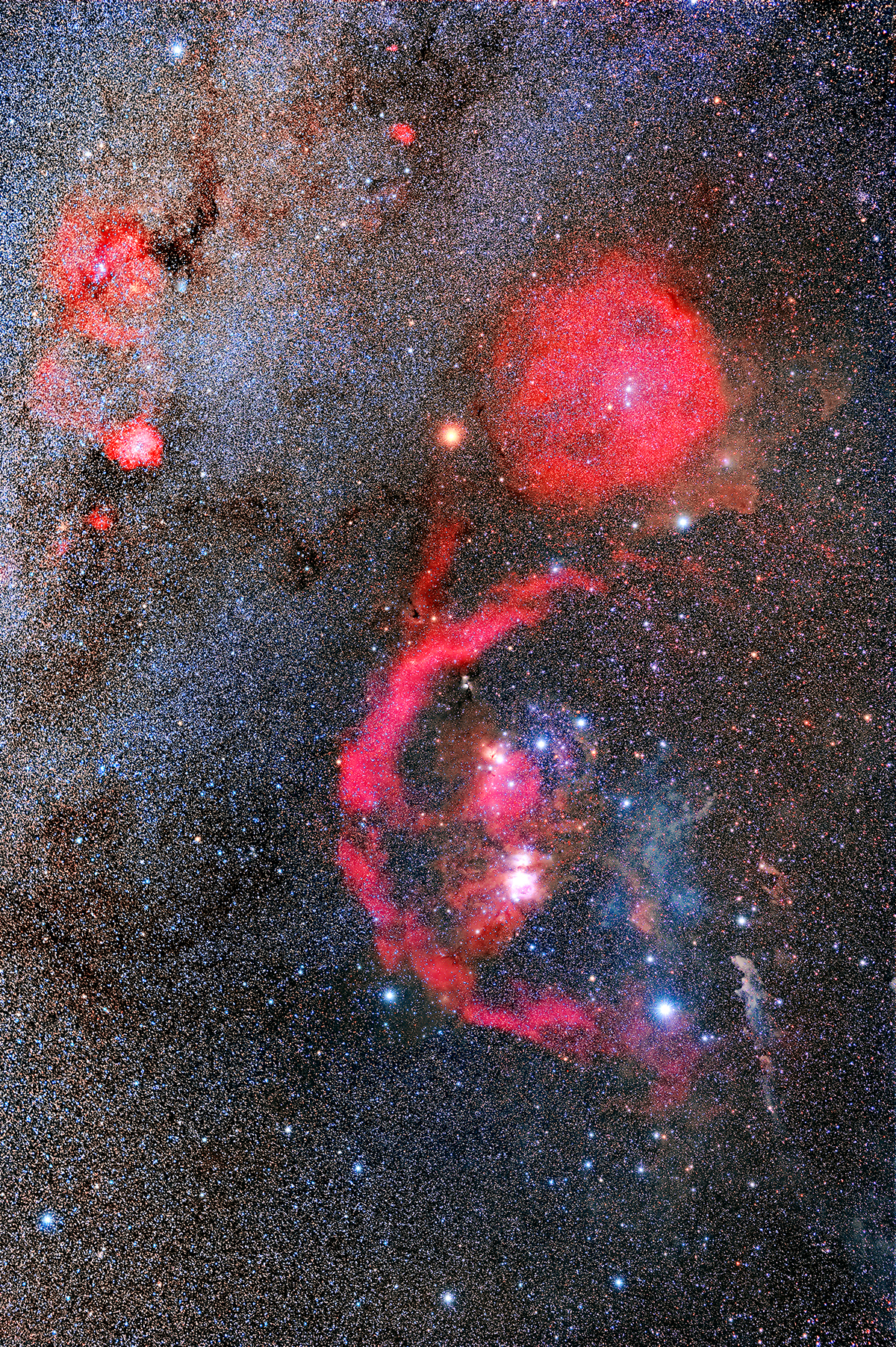
Photo Title: Orion
Name: Matt Dieterich
Location: Fort Davis, Texas in the USA
Technical Information: Modified Nikon Z6 | 50mm lens | f/3.2 | ISO 1600 and 3200 | 24×4 min + 21×3 min = total 159 minutes | Skywatcher Star Adventurer for tracking
Story Behind the Photo: I have wanted to capture a long exposure of the constellation Orion to reveal many of the beautiful deep sky objects for quite a few years. The red emission nebulae surrounding Orion, such as Barnard’s Loop, require dark night skies to be fully revealed. I hope this inspires you to attempt your own images of this stunning area!
Third Place
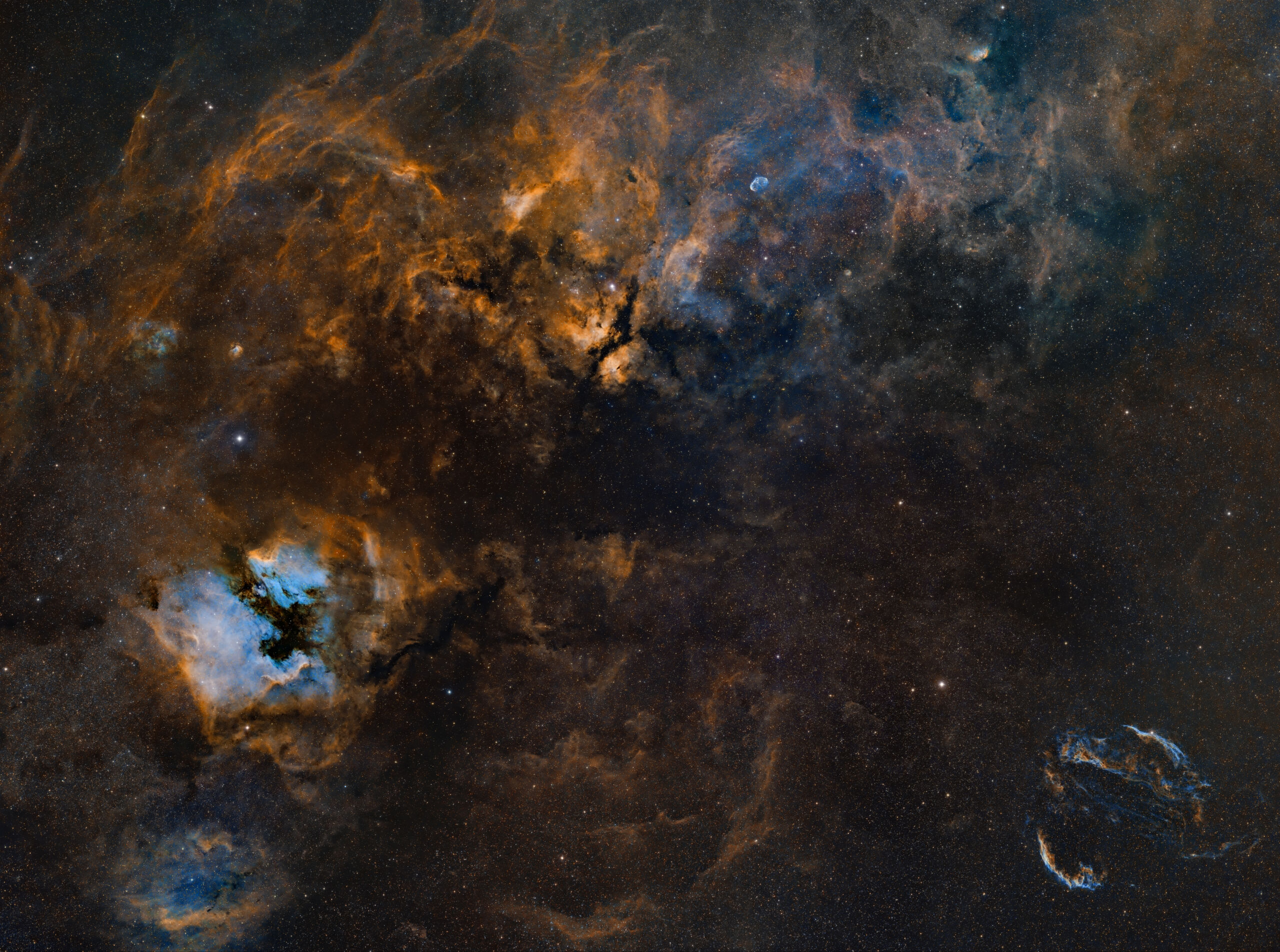
Photo Title: Cygnus Mosaic in Hubble Palette
Name: Ciaran O’Donnell
Location: Jordanstown, Northern Ireland
Technical Information: 9 panels of Ha (108 mins per panel) shot with a vintage Tamron 135mm | F2.8 lens @F4.5 | 1 panel of Oiii (7 hrs), and 1 panel of Sii (3.7 hrs) | both shot with a vintage Zuiko 50mm F1.8 lens @F4, 2″ | Baader filters
Story Behind the Photo: Mosaic of the Cygnus area in SHO with an Atik383l+.
The Mobile Photographer
No big camera? No problem! A shot from any of the above categories taken with a cell phone, tablet, or GoPro. No DSLR, mirrorless camera, or drone shots.
First Place
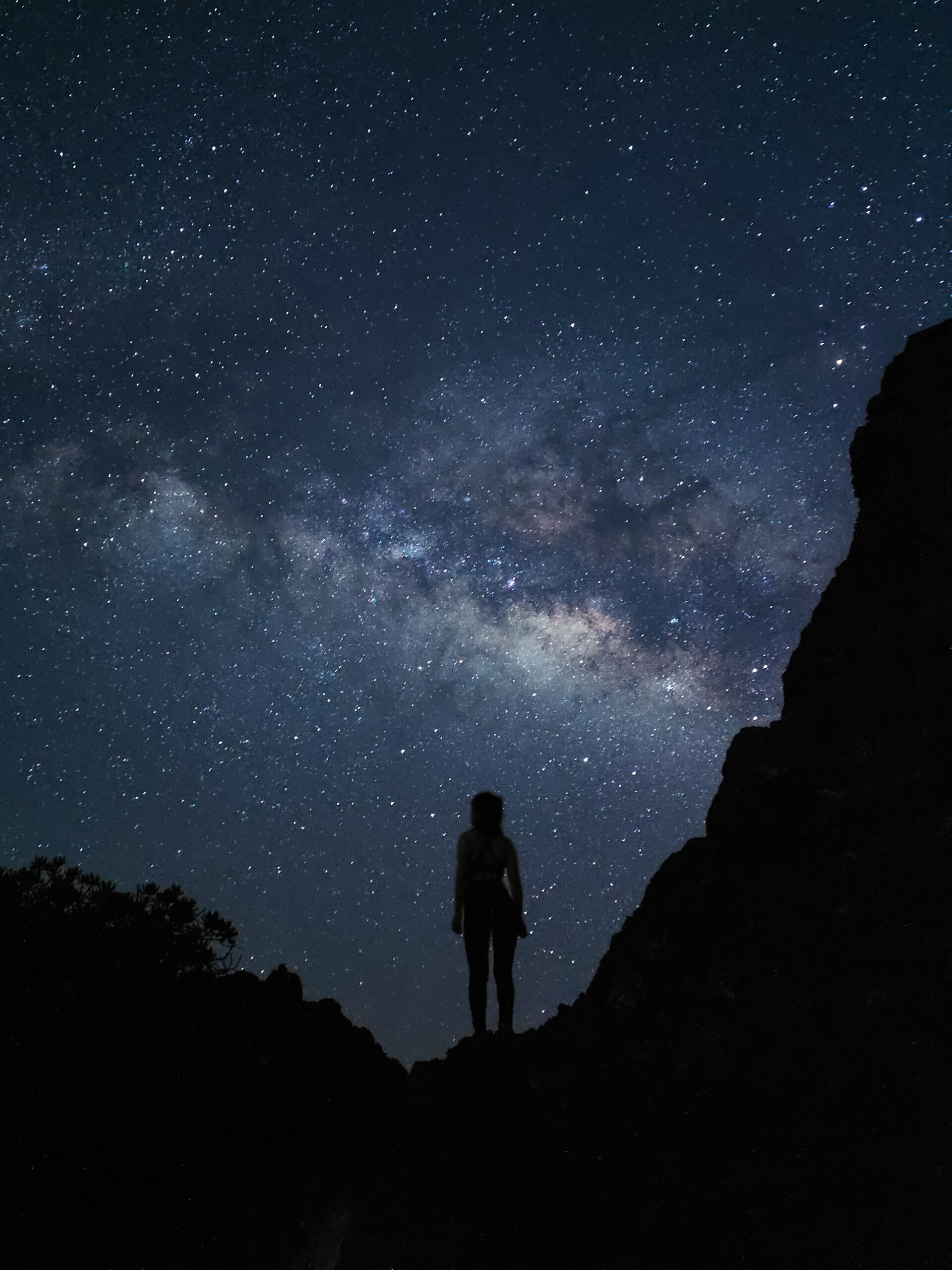
Photo Title: Seaside
Name: Ziyi Ye
Location: Hainan, China
Technical Information: I used a tripod to hold my phone Vivo X60 pro+ | 32 second exposure
Story Behind the Photo: I climbed to the high rock of the sea and face the Milky Way, everything around me is dark and unknown, I can hear the sea wave beating and my heartbeat clearly.
Second Place

Photo Title: The Center of Milky Way
Name: Chin Wei-Loon
Location: Pekan Nabalu, Sabah, Malaysia
Technical Information: HUAWEI P10 PLUS | 4mm | f/1.8 |Pro-mode (manual) | ISO3200 | Single-shot shutter speed: 20 seconds. 12 light frames |stacked by Starry Landscape Stacker 1.4.4 |Technical category: Stacked
Story Behind the Photo: The mobile phone has f/1.8 lens and Pro-mode for adjusting shutter speed & ISO value manually. Furthermore, it provides RAW image files! This sounds good for astrophotography. This photo is among the very first few images taken using a mobile phone. With stacking technique could further reduce the noise in the photo.
Third Place
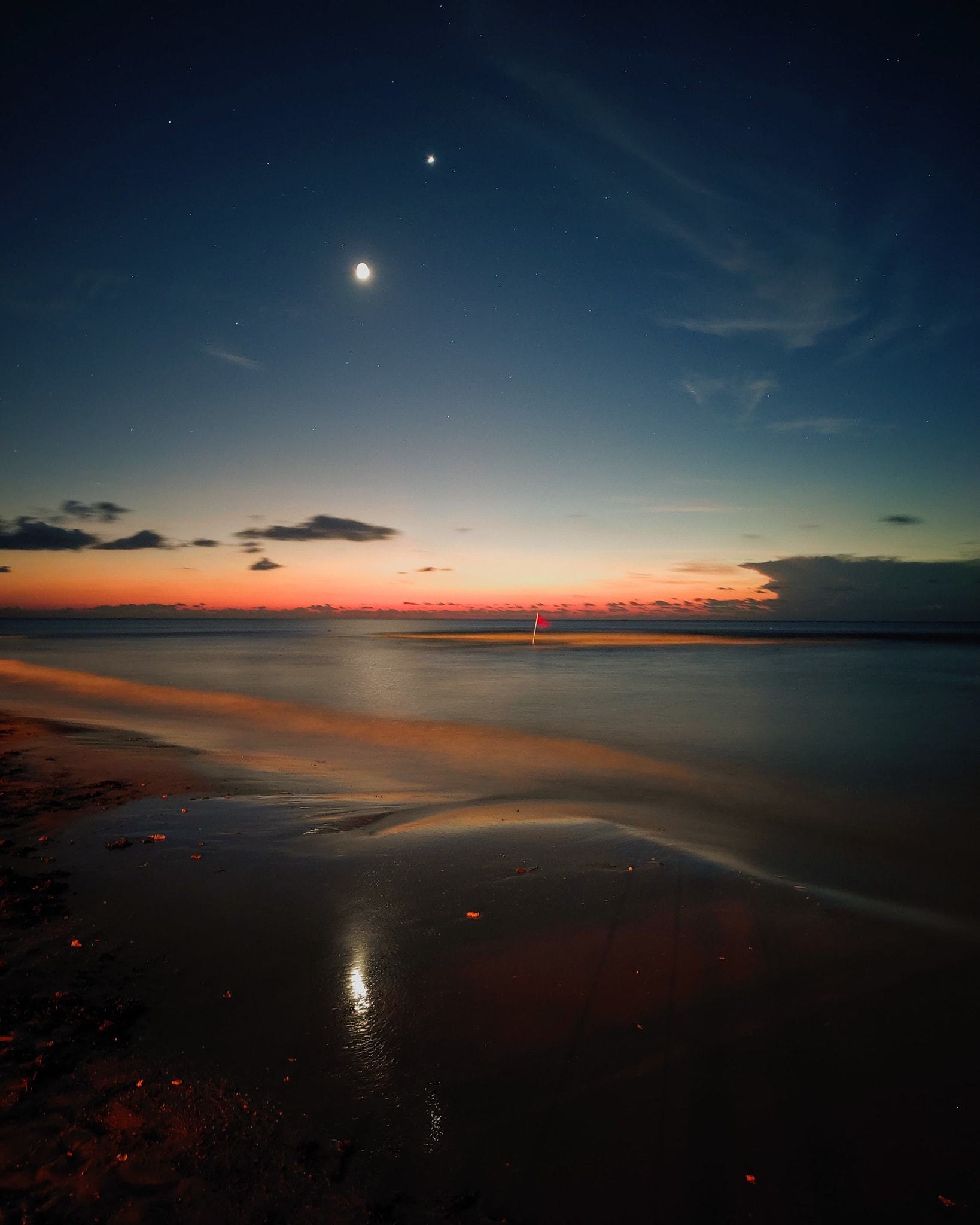
Photo Title: Venus & Moon with a cheap mobile phone
Name: Pavel Vorobiev
Location: Playa del Carmen, Quintana Roo, Mexico
Technical Information: Xiaomi Redmi Note 9 Pro | ISO 400| 30 seconds | f/1.9 | Single-exposure
Story Behind the Photo: Modern mobile phones, even the cheapest ones like this, surprise us with very capable cameras, offering great resolution, sensitivity, and dynamic range. This conjunction of Venus and Moon was shot with a simple tripod adapter. Mobile starscape/astrophotography could be the first door to this magnificent hobby or even a serious backup instrument for experienced astrophotographers.
Youth
A shot for any of the above categories taken by someone 17 years old or younger.
First Place
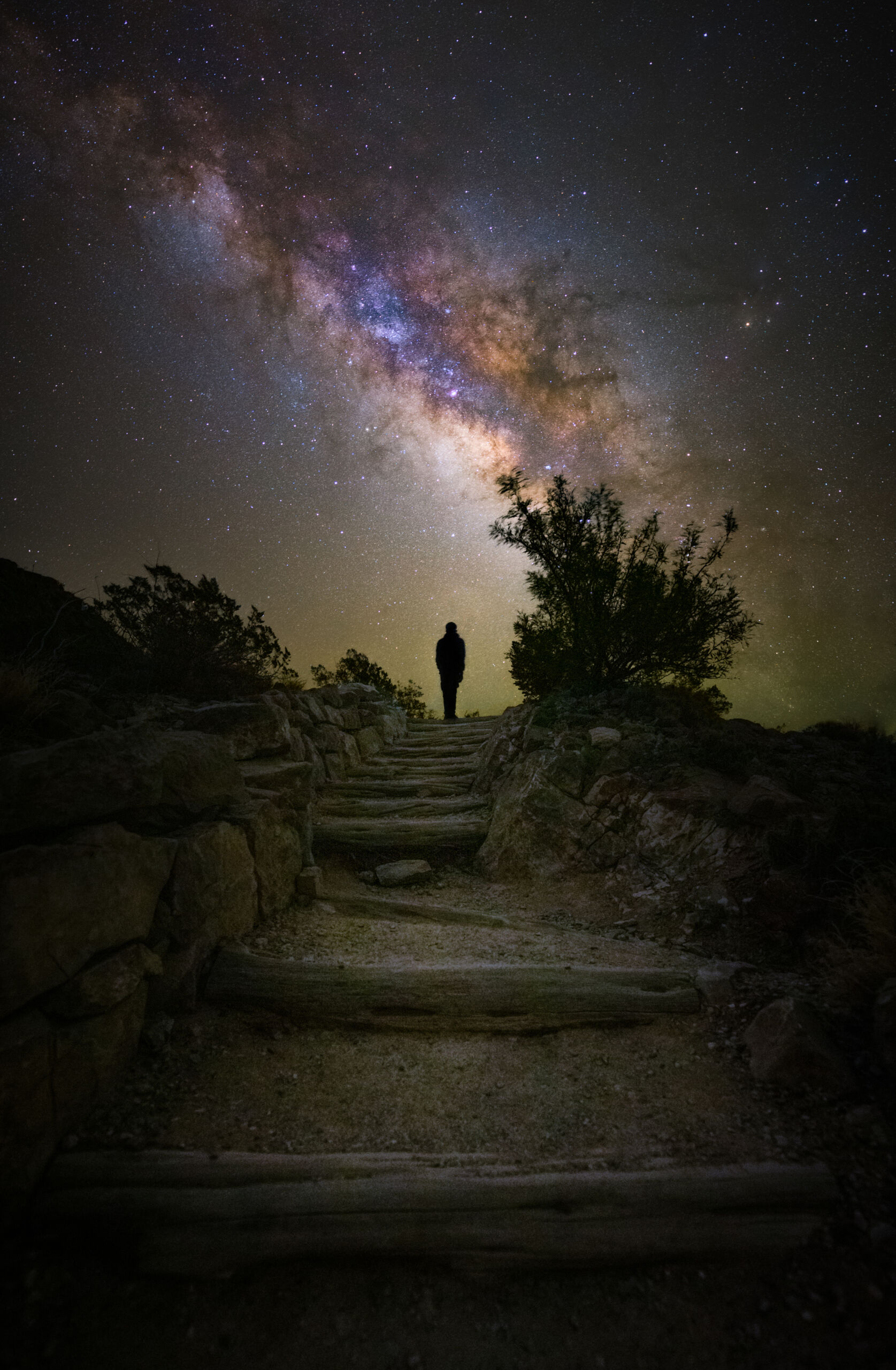
Photo Title: Stairs To The Heavens
Name: Jai Shet
Location: Big Bend National Park, Texas, USA
Technical Information: 14mm | f/2.5 | 15sec | ISO 8000 | 3 exposures stacked | Canon EOS 5D Mark IV
Story Behind the Photo: In April 2021, I camped with my family in Big Bend National Park in Texas. I woke up at 2:00 a.m. with my younger brother and hiked up a 1-mile mountain trail. On the way up, a flight of stairs seemed to ascend to the galaxy core. I stood at the very top and took a ‘selfie’ with my wireless camera remote. After a whole year of staying at home due to Covid-19, I was overjoyed to capture the milky way after such a long time.
Second Place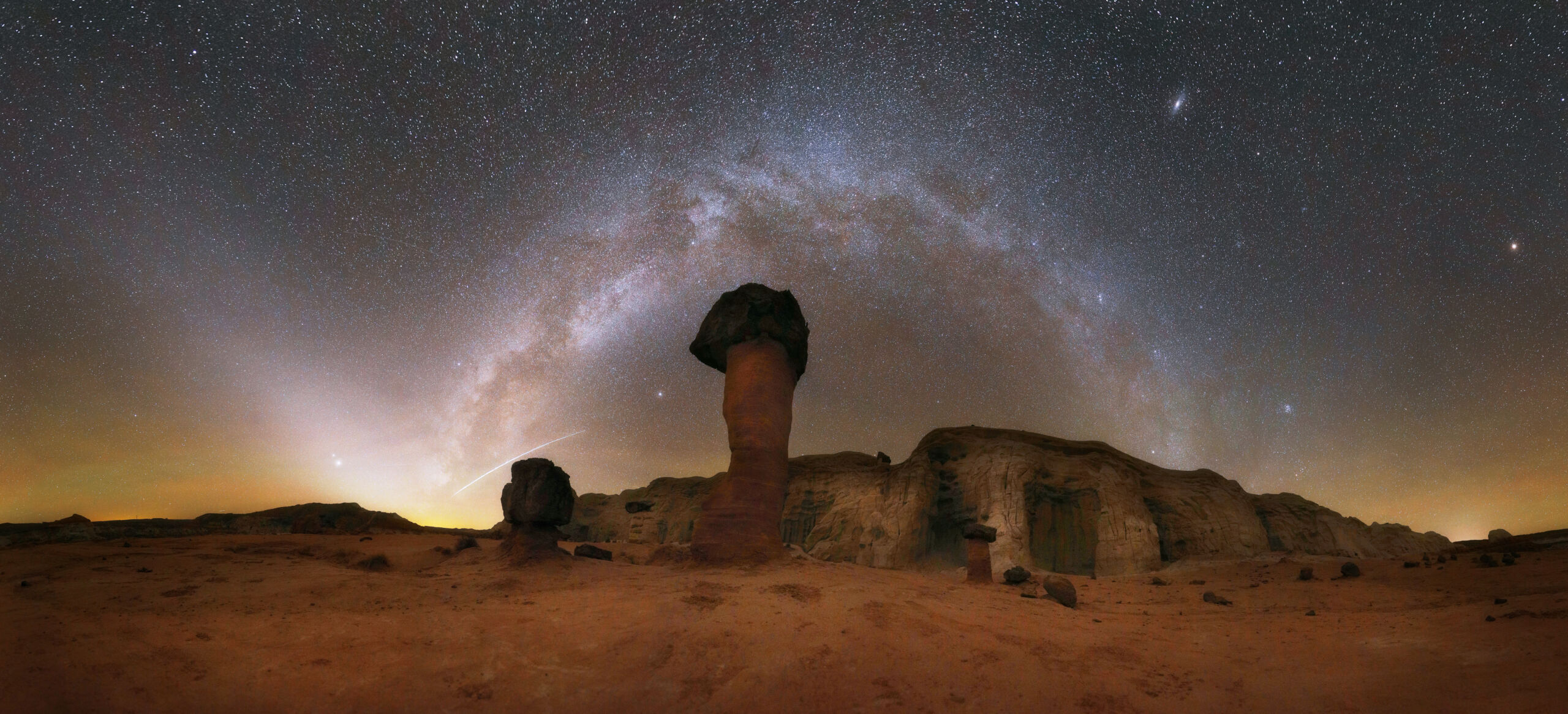
Photo Title: The Night Sky Party
Name: Neil Shet
Location: Kanab, Utah, USA
Technical Information: 50 images | the Sigma 14mm f/1.8 lens | 14mm | 20 sec | ISO 8000 | f/2.8 | Panorama | Canon 5dMark4
Story Behind the Photo: This 360-degree panorama contains a lot of the wonders of the night sky. Starting from the left of the image, bright zodiacal light beams out from the horizon with Jupiter and Saturn smothered by it. Starlink satellites trail perfectly over one of the Toadstool Hoodoos. The Milky Way arches over the biggest hoodoo while the Andromeda Galaxy near the upper-right claims the best seat in town. Coincidently, the Pleiades star cluster, Andromeda, and Mars form a triangle. A total of 50 images were combined to make this mosaic, not to mention the freezing cold weather.
Third Place

Photo Title: The Veil Nebulas of Cygnus
Name: Carl Crum
Location: Angwin, California, USA
Technical Information: Astronomical Object: Veil Nebulas | Date Photographed: August 14, 2020 | Camera: ZWO ASI2600MC-Pro | Telescope: Takahashi FSQ-106EDXIII | Mount: Astro-Physics 1200GTO | Filter: OPT Radian Triad Ultra Filter | Focal Reducer: Takahashi 0.7x Focal Reducer | Focal Length: 318mm | Aperture: 106mm | f/3 | Binning: 1×1 | Number of Individual Photos Stacked Together: 94 | Exposure Length of Each Individual, Photo: 180 seconds | Total Integration Time: 4.7 hours | Technical Categories: Stacked and Tracked
Story Behind the Photo: When starting out in astrophotography, imagers often shoot well-known objects. As a 15-year-old with only a couple of months’ experience, I was mesmerized by the Veil Nebulas: the remnants of a star that had blown itself to ribbons! This was one of my first attempts at narrowband-imaging with a one-shot color camera, which not only challenged my patience in the field but also my image-processing abilities.
Honorable Mentions
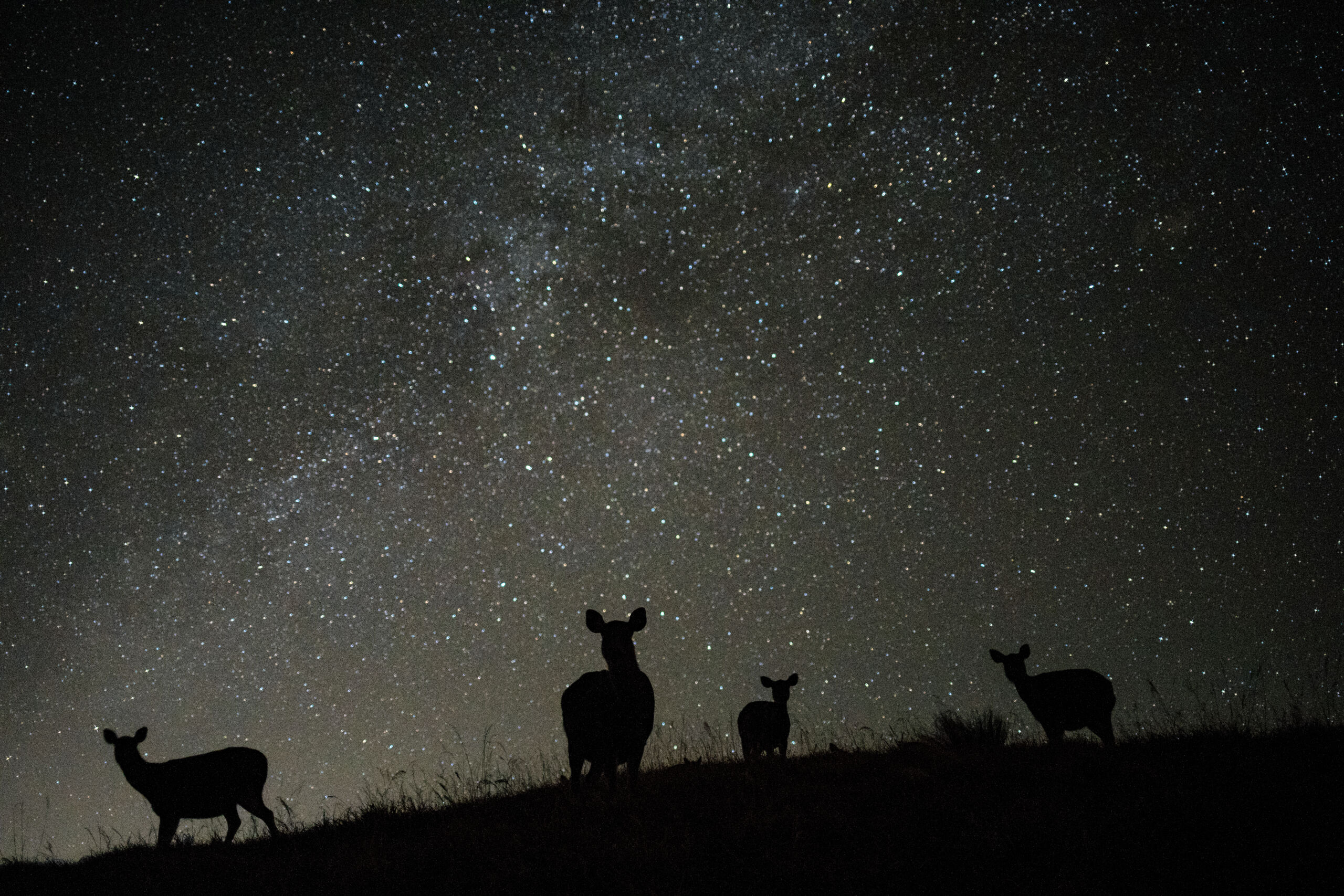
Photo Title: Saw the Deer in Taiwan
Category: Connecting to the Dark
Name: 陳政暉
Location: Nantou, Taiwan
Technical Information: A7III+35mm | F2 | ISO10000 | 2s | one shot
Story Behind the Photo: Taiwan Bai Shi Pool; Altitude 2,770 M
This hike took us ten days. That night many wild deer grazing by the tent
When they paused, I took a photo with the starry sky with a two-second shutter.
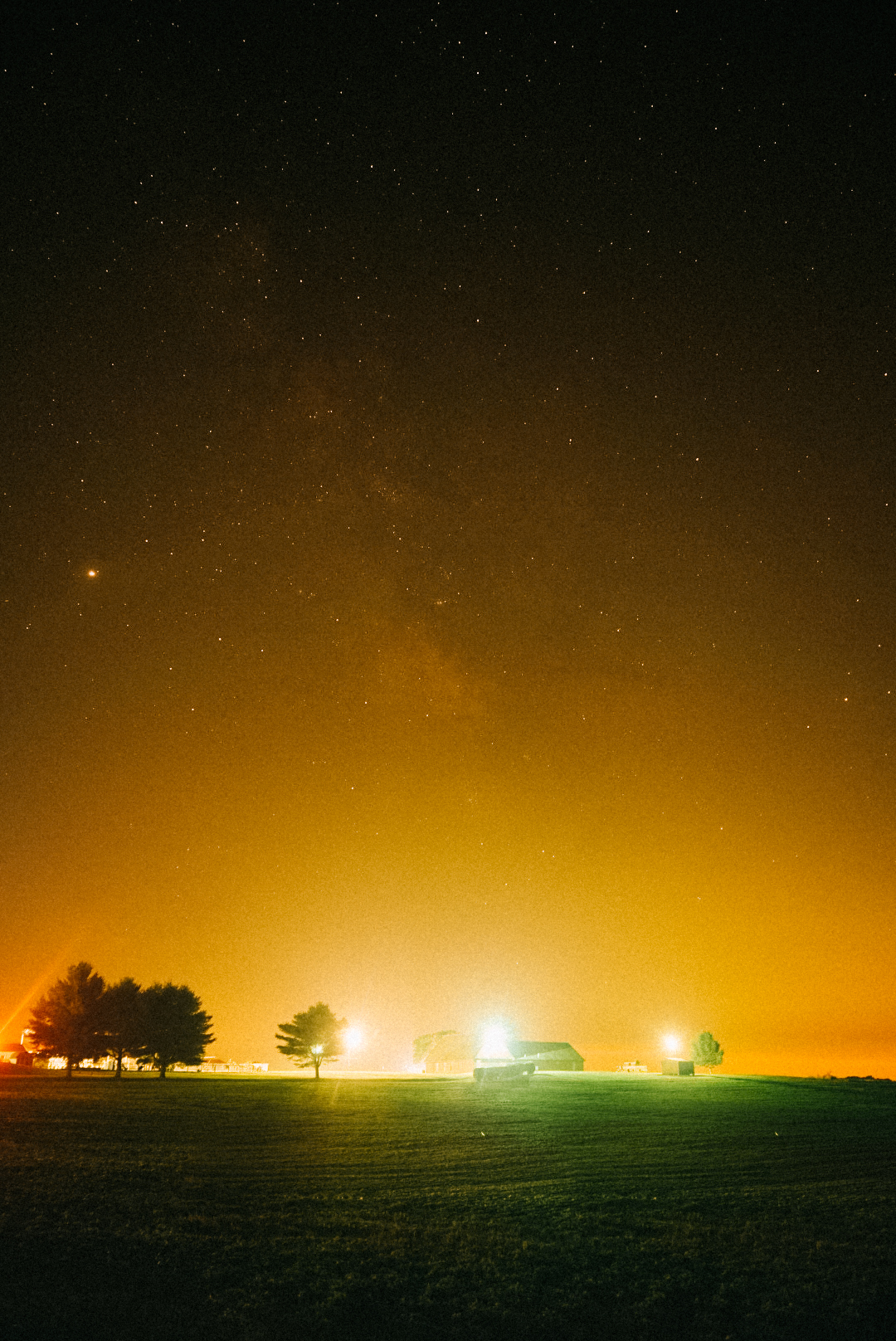
Photo Title: Astronomical Night
Category: Impact of Light Pollution
Name: Hannah Broder
Location: Pylesville, Maryland, USA
Technical Information: Single exposure | Sony A7III | 10s | ISO 1600 | 28mm | f 3.5
Story Behind the Photo: I captured this image in northern Maryland last summer (2020). These skies are some of the darkest available within an hour’s drive from the Bortle 9 skies I live under in Baltimore, MD. While the obscene light pollution and visible culprits make me frustrated, I also feel a sense of hope knowing this interference doesn’t have to be permanent and that a starry sky awaits when the lights dim.

Photo Title: The Delight of Fireflies
Category: Creatures of the Night
Name: Megan Bonham
Location: Elkhart, Indiana, USA
Technical Information: Canon EOS Rebel T6i | EF-S 60mm f/2.8 Macro USM | 60mm | f/4.0 | 1/8 sec | ISO 400 | single-exposure
Story Behind the Photo: In addition to their ecological role, fireflies are a source of wonder and delight for children and adults. Although their numbers are decreasing, my backyard continues to support a healthy population, and I value the time I spend with them each summer.
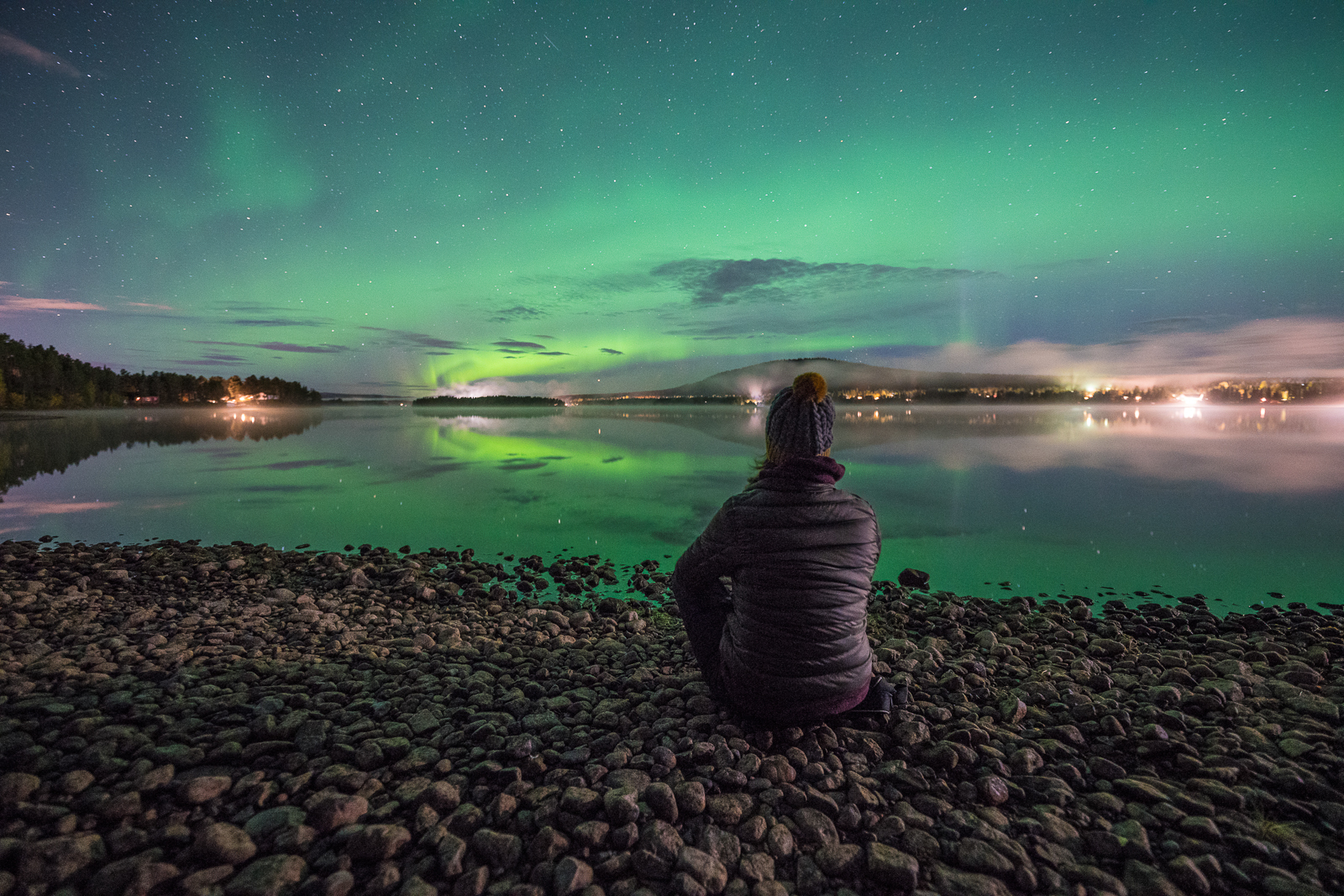
Photo Title: Reflections…
Category: Connecting to the Dark
Name: Julia Kuznetsova
Location: Poikkijärvi, Kiruna, Sweden
Technical Information: Sony A7Rii | Sigma ART 1.8 14mm | ISO 5000| 8 sec at f 2.2 | Single exposure
Story Behind the Photo: This is a “selfie”. I sit here on the river bank on the first night of my arctic trip. It is past midnight and my birthday just started. I spent 2 days driving up North as the flights are canceled during the pandemic, and I want to see Aurora Borealis again. And here it is. The owner of the place already knows me and switched off all external lights so that I am not disturbed during my meditation. It is the best birthday present.
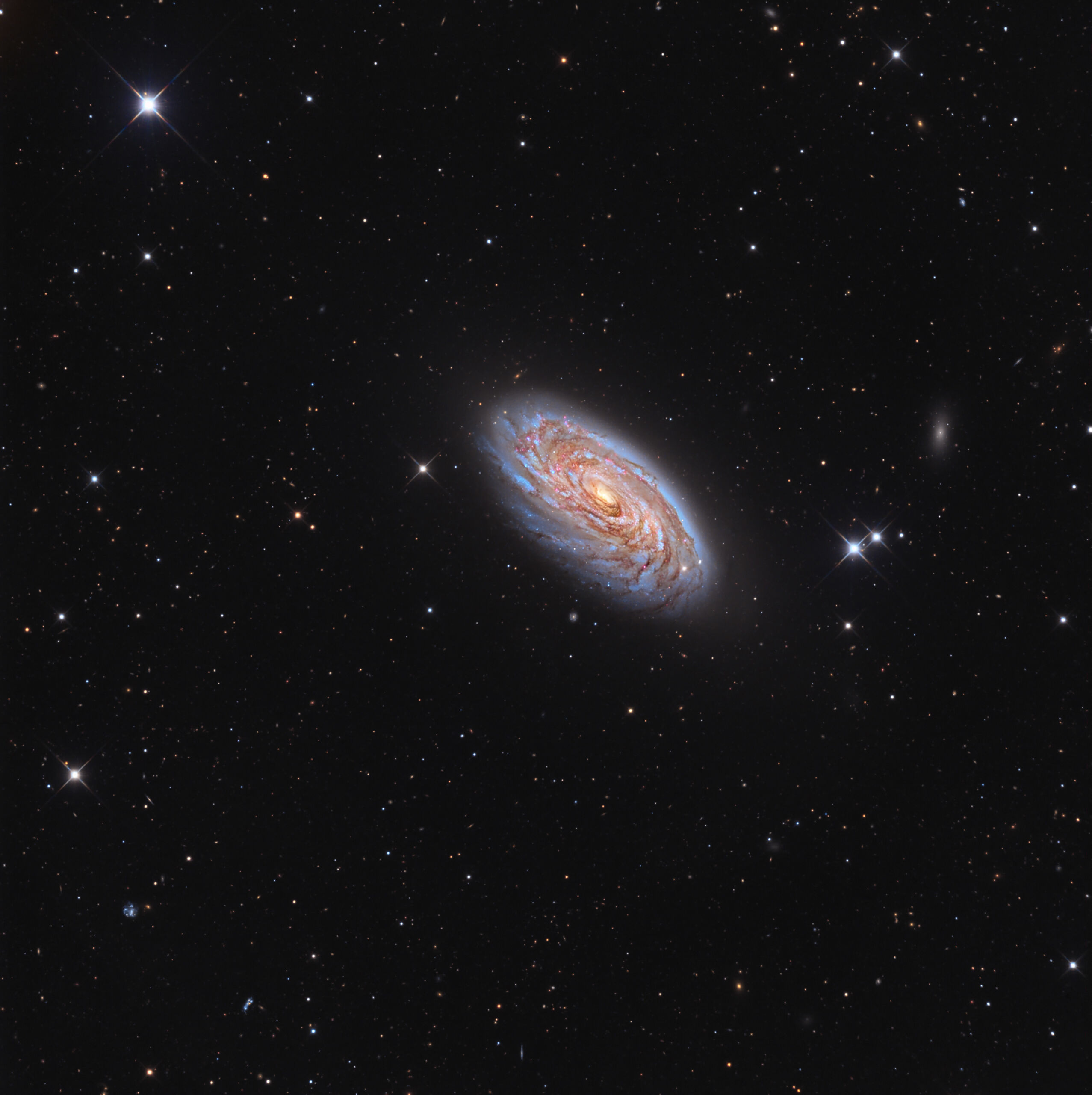
Photo Title: M88
Category: Deep Sky
Name: Adam Block
Location: Mount Lemmon SkyCenter, Mount Lemmon, Arizona, USA
Technical Information: “Tracked and Stacked” | multi-night 22 hours of exposure time | Optics 32-inch Schulman Telescope (RCOS) | Camera SBIG STX16803 CCD | Camera Filters Astrodon Gen II | Date April 2020 | Exposure LRGB = 10 : 4 : 4 : 4 Hours | Acquisition Astronomer Control Panel (ACP), Maxim DL/CCD (Cyanogen), FlatMan XL (Alnitak) | Processing PixInsight
Story Behind the Photo: Large bright colorful nebula are the “nearby” deep sky and likely submissions to this contest. They are part of our own Galaxy. But when we look to another we see the combined glow of billions of stars many millions of light years away. M88, shown here, is home to its own myriad of nebulae and perhaps planets (with their own light pollution problems). Galaxies then, as far as visible light goes, are the most typical and common thing we see when looking in deep space. Yet even modest amounts of light pollution makes them and the rest of the far-away Universe difficult to see. They are the celestial luminous canaries in the vast darkness of space.
Although this is a very famous galaxy on the outskirts of the Virgo Cluster- this image is one the highest resolution full-color images of it as captured from a ground-based telescope. The image can be cropped around the galaxy for publishing purposes- but I include the full image so that one can scroll around and enjoy the foreground stars, the main feature, and the background Universe filled with other far-away places hundreds of millions of light years away.
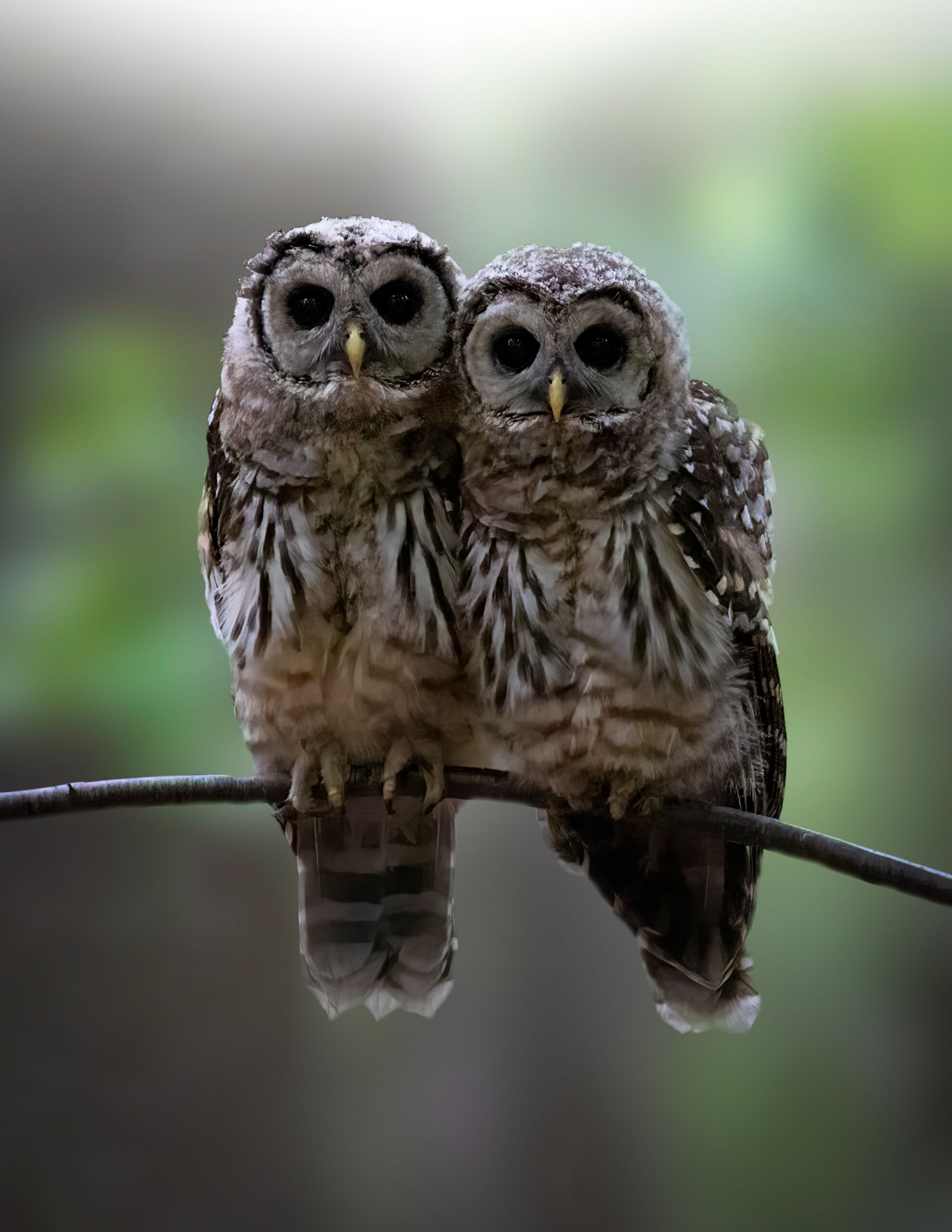
Photo Title: Twins
Category: Creatures of the Night
Name: Colin McGahan
Location: Bar Harbor, Maine, USA
Technical Information: Single Exposure | Canon R6 & Sigma 150-600 Contemporary | 1/800s | F/7.1 | ISO 25600
Story Behind the Photo: One of the most well-known and well-respected creatures of the night is the owl. There is not a night that goes by under the stars that I don’t get some hint of their activity, whether it be their calls from a distance or observing them fly throughout the air along roadways and trails.

Photo Title: City Lights vs Ancient Nights
Category: Impact of Light Pollution
Name: Rameez Rashid
Location: Temple of Athena in the historical city of Assos, now also known as Behramkale, Cannakale Province, Turkey
Technical Information: Nikon D700 | 14 mm | ISO-1250 | f/2.8 | 30 seconds | single long exposure shot | post-processed in Adobe Lightroom
Story Behind the Photo: Milky Way over the ancient temple of Athena. A glare of yellow street lights from a nearby village dimming the stars around it and the milky way struggling to shine through the brightness. I could not help but imagine going back in time wondering how different and mesmerizing would it have been.
Thank you to all participants for your submissions! Your photos and the stories behind them make clear the important role the photography community plays in the dark sky movement. Also, we want to extend a special thanks to our panel of judges for carefully reviewing all of the photo submissions. And last but not least, our contest sponsors GoPro, Peak Design, and PhotoPills for generously donating prizes for the winners.
To see the winners from last year, click here.
Feeling inspired? Check out these astrophotography tips and tricks and take a photo of your own.

















